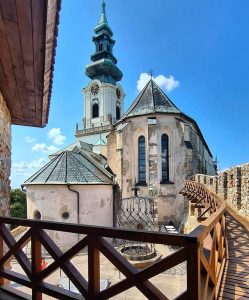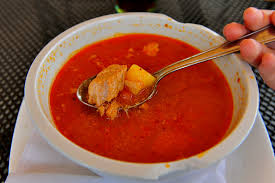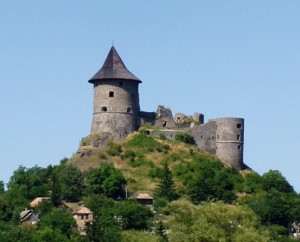Stará Ľubovňa with its more than 17,000 inhabitants is one of the most beautiful pearls of the Spiš region, not only due to its interesting history, but also thanks to its picturesque nature. The town located near The Pieniny National Park offers its visitors opportunities for recreation and tourism, as well as cultural programmes such as Castle Festival at Ľubovňa Castle and the traditional Ľubovňa Market with demonstrations of folk crafts.
History
The first written record of the town of Stará Ľubovňa dates back to 1292, but the year 1364 was for the inhabitants as well as for the development of the town more important because in that year Stará Ľubovňa was granted the free royal town status (along with 15 other Spiš towns) by Luis I. Stará Ľubovňa had several privileges, among others, the right to organize urban annual markets (seven times in a year).
Thanks to the deposit to the Polish crown by Sigismund of Luxembourg (1412 – 1772) this town became important economic and cultural center. After the return of Spišské towns to Hungary, the town lost its privileged position, but rich historical sights and surrounding natural beauties has determined its further development, which is hidden mainly in tourism.
Historic square
Town´s historical square is surrounded by rare burgher houses, of which the Renaissance-arcade Province House stands out, which in the past was the seat for the deposited 16 Spiš towns. At present, there is an exhibition of the House of Ľubovňa Burgess, which allows visitors to get to know the life of the middle class living in the 19th century. The visitors´attraction will certainly be attracted by the contemporary dwelling style, a paper-making workshop, a blue-and-white print workshop and a mint where each visitor can mint his or her own Ľubovňa´s gold.
Church of St. Nicholas
The center of the square is occupied by the St. Nicolas Roman Catholic Baroque church dating back to 1280. Among the Baroque items of the church the main altar of St. Nicholas from the middle of the 18th century decorated by wood carving, monstrance, the altar of the Virgin Mary of Carmel and the altar of the Virgin Mary of the Seven Sorrows are the most remarkable.
The late Gothic stone baptistery from the 16th century and the late Gothic tombstones made of sandstone and red marble are also very rare. The dominant feature of the column architecture is the image of St. Nicholas from the second half of the 19th century, as well as side altars and sculpture Lamentation of Christ.
Ľubovňa castle
The stone-walled Ľubovňa castle, built at the beginning of the 14th century and belonging to the fortification line protecting the Kingdom of Hungary, rises on a calcite rock at an altitude of 711 meters.
The castle expositions present the history of the castle, guilds, crafts and the life of the last owner of the castle – the Zamoyski family. The oldest part of the castle consists of the main tower and Gothic palace. Polish crown jewels were hidden at the castle from the Swedish troops between 1655 and 1661. After 1772 the castle started to decline and nowadays offers its visitors the opportunity to see various renovated exhibitions.
Museum of Folk Architecture – Ľubovňa open-air museum
There is the Ľubovňa open-air museum below the Ľubovňa castle which displays folk architecture sights of Spiš and Šariš region. The open-air museum is dominated by the Greek Catholic Church of St. Michal the Archangel of Matysová, which is one of the most valuable exhibits in the open-air museum. In the open-air museum visitors will find wooden residential houses from the beginning of the 20th century, as well as demonstration of the life of the local craftsmen. There are also expositions of folk customs worn at birth, wedding, Christmas or Easter. The open-air museum also includes farm buildings (barns, granaries, wells) and technical buildings (smithy, mill and carpentry workshop).
In the summer, the open-air museum organizes performances of folklore groups and Hubert’s festivities associated with a rich program and presentation of the lure of deer and roe deer.
Other attractions
Below the Ľubovňa Castle, the Historic Military Camp has been built, which depicts military life in the 16th century and is a place where several cultural events or summer camps for children take place.
The Ľubovnianske kúpele spa resort with five mineral springs and several hiking paths provides for magnificent views of the High Tatras. The Ľubovnianske kúpele is a center of the traditional winter sports, especially skiing and cross-country skiing.
We are glad to provide you our services.
 +421 948 365 187
+421 948 365 187 info@realdealplus.com
info@realdealplus.com



